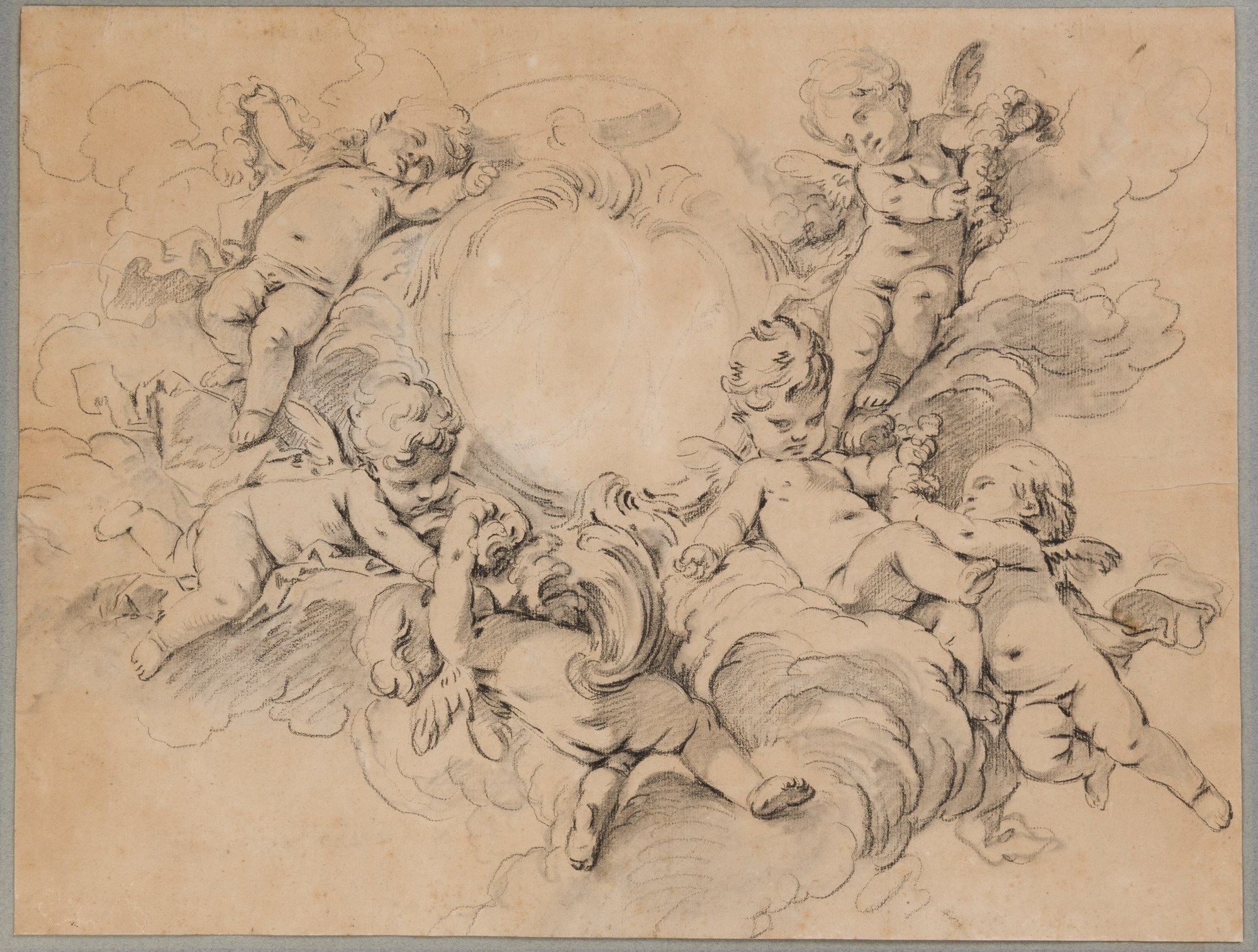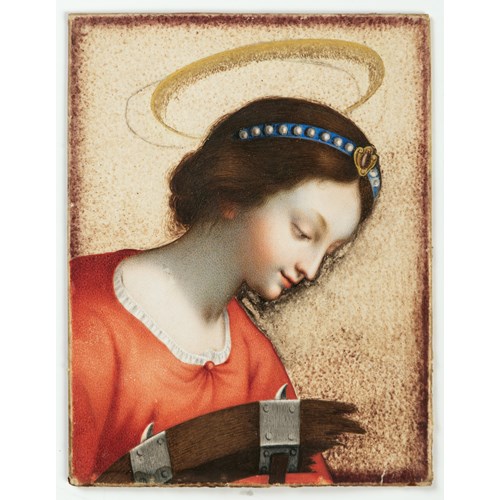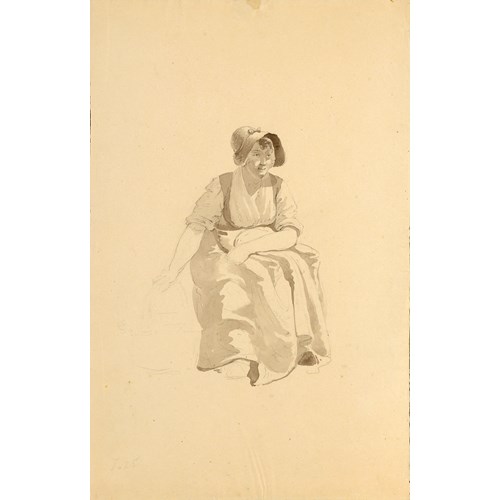François Boucher
Six Putti in Clouds Supporting a Cartouche with the Letters AN and Surmounted by a Ducal Crown
Relatively few drawings by Boucher related to his ornamental designs have survived. As Françoise Joulie points out, ‘Boucher’s contributions to the decorative arts are well known, but drawings related to his work in this genre are rare. Those few extant drawings reveal his designs for andirons, chandeliers, clocks, musical instruments, screens and silverware, as well as schemes for porcelain for the manufactories of Sèvres and Vincennes. The earlier drawings are strongly marked by the Rococo mode – a style he helped to create – and the later works, especially those after 1760, are imbued with an elegant, discreet Neoclassicism.’
This sizeable sheet aptly highlights Boucher’s abilities as a designer of cartouches and frames, and can be closely related to two equally large and stylistically comparable drawings of putti surrounding an ornamental shield surmounted by a ducal crown. Of a similar technique and scale to the present sheet but oval in format is a drawing formerly in the Houthakker collection and today in the Horvitz collection in Boston, while another related drawing of a cartouche with a coat of arms supported by putti is in the Fitzwilliam Museum in Cambridge.
The late Alastair Laing was the first to suggest that the initials AN visible on the shield in the present sheet indicate that it may have been intended for a commission from Adrien Maurice de Noailles, 3rd Duc de Noailles and Maréchal de France (1678-1766). He also noted that the shield in the Horvitz drawing incorporates the order of the Golden Fleece, and that the Duc de Noailles was one of the very few nobles in France who had earned that particular decoration, which he was awarded in 1702. The scale of the present sheet, and of the two related drawings in the Horvitz and Fitzwilliam Musuem collections, would suggest that all three may have been studies for the decoration of the door panel of the duke’s coach. (Indeed, the fact that Fitzwilliam drawing is pricked for transfer would also support such a connection.) As Laing further points out, ‘It is hardly likely that Boucher would have undertaken the actual task of painting coach panels himself, or even that his studio would have done so…They will instead have been executed by one of the specialist carriage-painters, capable of providing the brilliantly varnished finish that such works required...Thanks to these three drawings, we can see that Boucher was indeed capable of effortlessly turning to making designs for such bagatelles when occasion arose.’
The present drawing once belonged to the art historian Michael Jaffé (1923-1997), who served as director of the Fitzwilliam Museum in Cambridge between 1973 and 1990.
Provenance: Michael Jaffé, Cambridge and Clifton Maybank, Dorset
His sale, London, Christie’s, 29 June 1971, lot 58 (unsold)
Thence by descent.
Literature: New York, Pierpont Morgan Library, and elsewhere, European Drawings from the Fitzwilliam, exhibition catalogue, 1976-1977, p.62, under no.97; Alastair Laing, ‘A group of Boucher’s designs for coach panels’, in Peter Fuhring, Design into Art. Drawings for Architecture and Ornament: The Lodewijk Houthakker Collection, London, 1989, Vol.I, p.118, fig.12; Françoise Joulie et al, Esquisses, pastels et dessins de François Boucher dans le collections privées, exhibition catalogue, Versailles, 2004, p.90, under no.40; Alvin L. Clark, Jr., ed., Tradition & Transition: Eighteenth-Century French Art from The Horvitz Collection, exhibition catalogue, Paris, 2017, p.142, under no.45 (entry by Françoise Joulie).
More artworks from the Gallery









